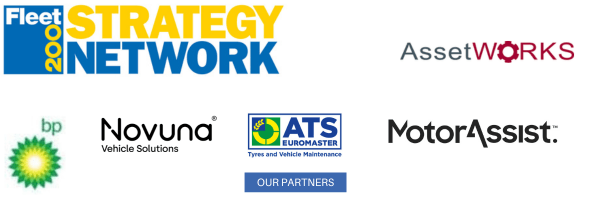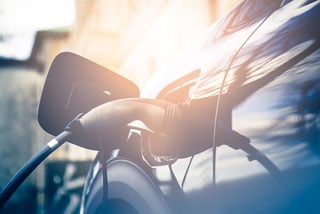At the most recent Fleet200 Strategy Network meeting, Stephen Briers, group editor at Fleet News, discussed public charging pricing trends, rapid charging infrastructure and what more could be done to enable the transition to electric, with Melanie Shufflebotham, co-founder and chief operating officer of the leading eMobility service provider, ZapMap.
Stephen Briers: How do you expect EV charging prices to pan out for the rest of the year?
Melanie Shufflebotham: Pricing for electric vehicles (EVs) is a tale of two halves. About 80% of battery electric vehicle (BEV) drivers can charge at home and benefit from low pricing. At a maximum, the price gap of around 27p/kWh is increasing to 29p/kWh, reducing to around 8p or lower for those who have the option to install solar panels or take advantage of lower price off-peak tariffs.
Prices have increased significantly over the last couple of years when charging on the public charging network. We track all the sessions across the public charging network and calculate the weighted average price that people are paying. For the AC network, it is around 55p/kWh and for the ultra-rapid network, it’s about 80p/kW - a 10% increase from this time last year.
Increasing energy prices have been driving the prices and on the flip side, charge point operators (CPOs) are feeling the pinch and need to start bringing a return on investment (ROI) to find a return on their capital costs – and there is an issue that the price is high. There’s also the issue of the VAT, that’s a big ask and there’s a big campaign for people in the industry to equalise the VAT between domestic, which is at 5% and public charging - at 20%.
SB: What options are available for people who cannot charge at home, to help bridge the pricing gap?
MS: In our latest EV survey, 80% said they had a charge point at home. We asked the people who said they didn’t have a charge point, how they charge and 50% responded saying that they charge at home effectively using a three-pin plug, which isn’t ideal for health and safety on the pavement.
People said they wanted an as close to charging at home experience as they could get, for example, on-street chargers, a gully across the pavement and potentially to share with other people – but there certainly is an issue. However, there are lots of solutions out there and with the Local Electric Vehicle Infrastructure (LEVI) scheme, which is helping to fund some of these solutions, there’s going to be an improvement.
SB: The Government had a target of having six or more rapid or ultra-rapid chargers at every motorway service station in the UK by the end of 2023. What are your thoughts on that ambition and why it wasn’t achieved?
MS: The rapid, and particularly the ultra-rapid charging network, is important and is the established solution for going on longer journeys – people want to be able to charge up as quickly as possible and motorway services. Having at least six at every motorway service station is a good ambition.
The problem with the Government target is that it was set without discussion with the main CPOs about whether it was achievable. The Government put aside £950 million to help improve the grid connections, however, that money needs to start being spent so the services can be unlocked.
The rollout of the ultra-rapid charging network can be seen as a positive news story across 2023. There were 111% more ultra-rapid charges (high-speed 100k/w or more) installed at the end of 2023 versus the end of 2022, which is a great achievement.
Although the overall target of having six or more ultra-rapid chargers wasn’t achieved at all motorway services, a lot of locations overachieved that. For example, Reading West, which has 30 ultra-rapid chargers from different networks including Grisdserve, BP Pulse and Tesla – who traditionally have a closed network, have opened it up to the public. We’re seeing a big shift to ultra-rapid chargers, with lots being installed.
SB: Is there more focus on public charging instead of route charging, or do you feel that places like hotels, could be doing more to support that network?
MS: The most important thing is the ultra-rapid network to support those longer journeys - it should be front and centre.
The most important thing from where I sit is this close-to-home charging and the ability to support your everyday charging. Then, its destination charging.
We’ve seen some interesting developments in the supermarket sector over the last couple of months – Sainsbury’s has announced Smart Charge, a whole new charging point network of 700 ultra-rapid devices across 100 stores by the end of the year.
SB: Is the Government doing enough to support uptake or do you feel there’s more it could be doing?
MS: Overall, the Government has provided much support for EVs and charging.
A recent House of Lords report looked at EVs and what more the Government could do, and the number one thing was supporting the market and providing consumer confidence – there has been so much misinformation out there and that’s important.
Secondly, was supporting the charging infrastructure roll-out. Something I often hear is about access to good grid connections, fast – the money’s there but often that’s a constraint. Then at a local level, not being so constrained by a lot of planning constraints. The Government recently announced that it would be consulting on shifting from planning permission needed to permit, for example, for gullies across the pavement. It’s about removing this red tape to enable the transition.
SB: How can we ensure that more sites consider accessibility for electric vans and vehicles that are towing?
MS: Some initiatives in the industry are trying to address accessibility for vans – for example, heavy cables, wider bays, and longer bays. As a data aggregator, we want to provide that information to drivers so they can find and filter charge points that are suitable for their needs.
Ultimately, it's about getting CPOs to provide the information into feeds that they provide to us so we can display that information, and particularly getting the Open Charge Point Protocol (OCPP) standard – the standard of all charger points, that opens the way that the data is structured to include this information, which can then be passed through to aggregators and we can display that information.
SB: What opportunities do you see with artificial intelligence (AI) and connectivity that can enhance the data that you can share with people?
MS: We do a lot of analysis of the charge point utilisation, so when charges happen, weekend versus weekday - when people start plugging in their cars. Is it different for high-power charging vs low-power charging? All useful information for people who are worried about the grid and the pressure on it.
One of the big issues is balancing the grid and in the too-distant future, electric cars will play a huge role in managing the balance in the grid and AI could help with that.























Login to comment
Comments
No comments have been made yet.